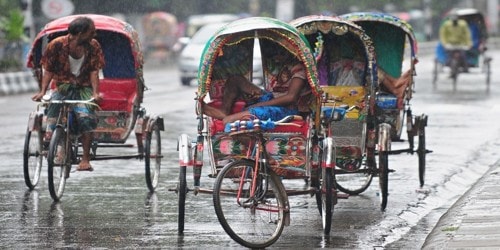Ragging is the practice of senior students mildly or severely bullying ‘newcomers’ or ‘freshmen’ in a higher education academic environment. ‘Ragging is a systemized form of human rights abuse in educational institutions in South Asia,’ according to the “Society for People’s Action Change and Enforcement.” It defines ragging by categorizing the threat as verbal, physical, or sexual abuse. These abuses are frequently observed in the form of most forceful or persuasive acts, such as – dancing, singing, playing truth or dare, proposing a girl or a boy, performing explicit sexual acts, and a variety of other forms that frequently result in dire consequences for the victim.
Ragging has become a threat, a source of fear and surprise not only for freshmen but also for their parents, who are sending their children to pursue higher education with their hard-earned money. Several intellectual youths have become ragging martyrs; some have had nervous breakdowns, some have left institutes after being subjected to ragging, some have committed suicide, and some have been murdered by seniors under the guise of ragging.
Ragging has been described as a heinous practice by the court, the authorities, the principal, and every concern, but it persists despite the court’s, authorities, and principal’s rules, regulations, and directives. Nobody could claim to have completely stopped it.
The most heinous case of ragging was revealed in November 1986, when Navarasu, a 17-year-old first-year medical student at Annamalai University in Chidambaram, Tamil Nadu, was brutally murdered by a senior named “David,” who was said to be a Karate expert. He murdered Navarasu because he refused to submit to his ragging whims.
In August 2003, an engineering student at Engineering College Jalpaiguri in West Bengal was admitted to hospital after his seniors subjected him to nightly brutal ragging. For refusing to strip in front of the seniors, the victim was beaten with iron rods and bicycle chains.
In August 2003, IIT Delhi expelled five senior students for ragging a fresher who left the college after being ragged by these seniors. In the same month, a student at Pune Institute resigned just a few days after enrolling in July for the same reason: inhumane ragging.
The governments, both central and state, have taken positive steps to put an end to this practice. Mr. S.R. Bommai, the HRD Minister at the time, informed the Rajya Sabha that steps were being taken to ensure that those found guilty of ragging were treated as guilty of gross misconduct and that the penalty of rustication or removal from the rolls of the universities could be imposed on the offenders. He also informed the House that instructions have been issued to universities, institutions, and state governments to take firm action to combat this threat and to invoke legal provisions if necessary.
A few years ago, the Governor of Kerala issued the “Kerala Prohibition Of Ragging Ordinance,” which sought to prohibit ragging in the state’s educational institutions. The ordinance, among other things, provides for the dismissal of a student from an educational institution who is found to have engaged in acts of ragging, and for that student to be barred from enrolling in any other educational institute for a period of five years from the date of such dismissal.
In a public interest case in 2001, the Supreme Court stated that “failure to prevent ragging by management would be an act of negligence in maintaining discipline in the institution.” If a student is subjected to ragging, the Principal and other authorities will be held accountable.’ The Supreme Court also stated that “if an institution fails to curb ragging, the UGC/funding agency may consider discontinuing financial assistance to such an institution until such time as it implements anti-ragging norms.”
A university may consider disaffiliating a college or institution that fails to stop ragging after the court issued a strong warning. Though the Supreme Court has issued very strict and stringent guidelines to combat the menace of ragging, one must wonder why students resort to such heinous practice, when these so-called seniors are also from decent homes and belong to the nation’s intellectual group of students.
Why do so few people engage in such socially unacceptable behavior? Why don’t the so-called seniors understand the problems of their own juniors and subject them to such inhumane acts?
When we give serious thought to the above questions, we discover that our current educational system is intended to produce intelligentsia, but it is completely devoid of moral and ethical values. We do not instill philanthropic and moral values in our students. There is no place for ethics in our education; instead, we teach them the importance of money’s materialistic value. The outcome is now meaningless. How solely are the students to blame for such acts? Teachers and parents bear equal responsibility if they are unable to instill in their students the values of a good citizen. Academic credentials alone are meaningless. If education does not teach students to share the problems of others to love all serve all, it would become meaningless.
It shall be important to quote the following words of a great thinker that –
If money is lost, nothing is lost
If health is lost, somethings are lost.
If a character is lost, everything is lost.
To combat the scourge of ragging, it is only necessary to instill in students the value of good character, as well as the value of love and affection for their juniors and fellow beings.
















